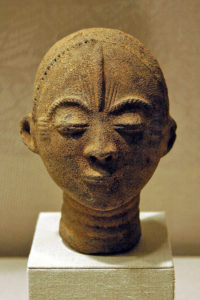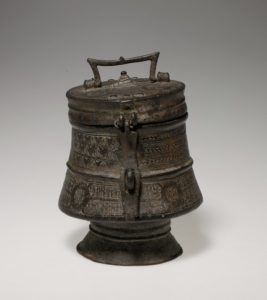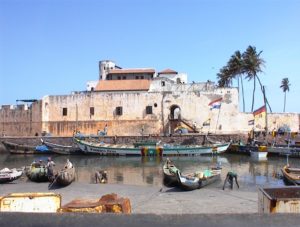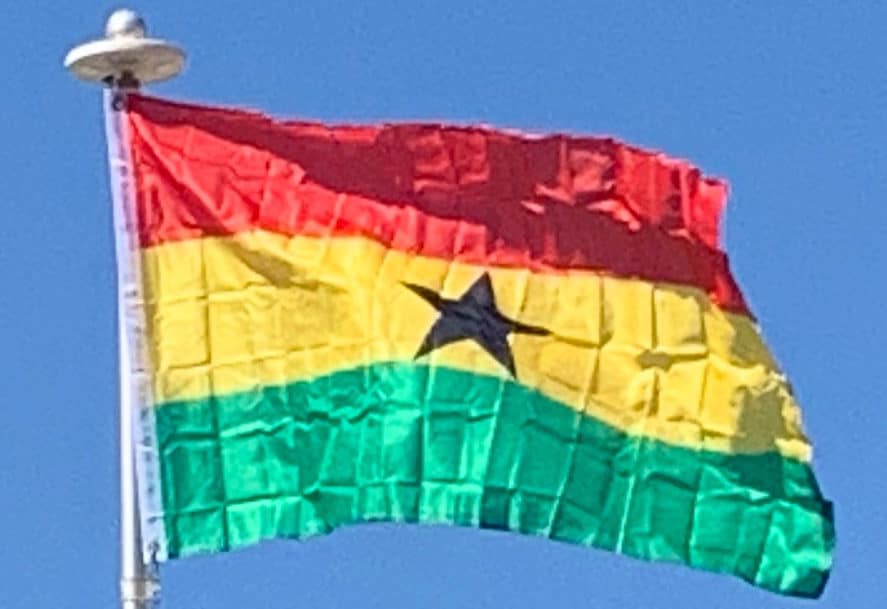The Kingdom of Ashanti government operated first as a loose network, and eventually as a centralized kingdom with an advanced, highly specialized bureaucracy centered in the capital city of Kumasi. Prior to Akan contact with Europeans, the Akan people created an advanced economy based on principally gold and gold bar commodities then traded with the states of Africa.

The earliest known kingdoms to emerge in modern Ghana were the Mole-Dagbani states. The Mole-Dagomba came on horseback from present-day Burkina Faso under a single leader, Naa Gbewaa. With their advanced weapons and based on a central authority, they easily invaded and occupied the lands of the local people ruled by the Tendamba (land god priests), established themselves as the rulers over the locals, and made Gambaga their capital. The death of Naa Gbewaa caused civil war among his children, some of whom broke off and founded separate states including Dagbon, Mamprugu, Mossi, Nanumba and Wala.
European Contact – 15th Century:
Akan trade with European states began after contact with the Portuguese in the 15th century. Early European contact by the Portuguese people, who came to the Gold Coast region in the 15th century to trade and then established the Portuguese Gold Coast (Costa do Ouro), focused on the extensive availability of gold. The Portuguese built a trading lodge at a coastal settlement called Anomansah (the perpetual drink) which they renamed São Jorge da Mina.

In 1481, King John II of Portugal commissioned Don Diego d’Azambuja to build the Elmina Castle, which was completed in three years. By 1598, the Dutch had joined the Portuguese in the gold trade, establishing the Dutch Gold Coast (Nederlandse Bezittingen ter Kuste van Guinea) and building forts at Fort Komenda and Kormantsi. In 1617, the Dutch captured the Olnini Castle from the Portuguese, and Axim in 1642 (Fort St Anthony).

Other European traders had joined in gold trading by the mid-17th century, most notably the Swedes, establishing the Swedish Gold Coast (Svenska Guldkusten), and Denmark-Norway, establishing the Danish Gold Coast (Danske Guldkyst or Dansk Guinea). Portuguese merchants, impressed with the gold resources in the area, named it Costa do Ouro or Gold Coast. Also beginning in the 17th century — in addition to the gold trade — Portuguese, Dutch, English, and French traders also participated in the Atlantic slave trade in this area.
The First Anglo-Ashanti war, 1823–31:
More than thirty forts and castles were built by the Portuguese, Swedish, Dano-Norwegians, Dutch and German merchants; the latter Germans establishing the German Gold Coast (Brandenburger Gold Coast or Groß Friedrichsburg). In 1874 Great Britain established control over some parts of the country, assigning these areas the status of British Gold Coast. Many military engagements occurred between the British colonial powers and the various Akan nation-states. The Akan Kingdom of Ashanti defeated the British a few times in the 100-year-long Anglo-Ashanti wars but eventually lost with the War of the Golden Stool in the early 1900s.
Transition to Independence:
In 1947, the newly formed United Gold Coast Convention (UGCC) led by “The Big Six” called for “self-government within the shortest possible time” following the Gold Coast legislative election, 1946. Kwame Nkrumah was the first Prime Minister of Ghana and the first President of Ghana and formed the Convention People’s Party (CPP) with the motto “self-government now”.
